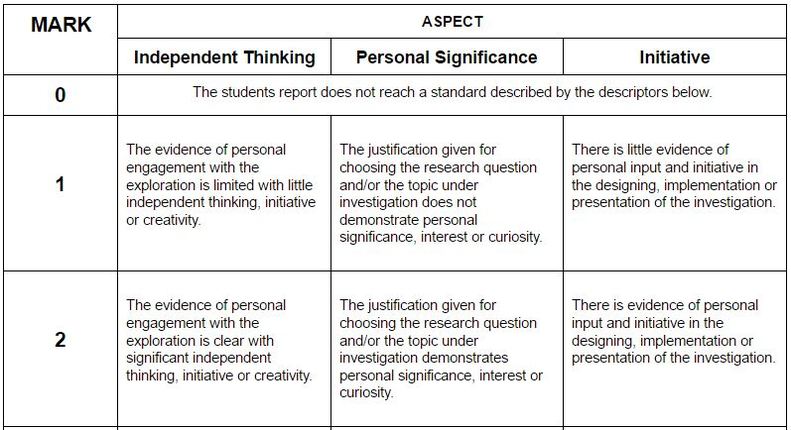Internal Assessment Personal Engagement
Click for a printable summary of IB internal assessment requirements.
This criterion assesses the extent to which the student engages with the investigation and makes it their own. Personal engagement may be recognized in different attributes and skills; these could include addressing personal interest or showing evidence of independent thinking, creativity, or initiative in the designing, implementation or presentation of the investigation.
For the personal engagement, criterion, students must provide clear evidence that they have contributed significant thinking, initiative, or insight to the investigation. Personal significance, interest, and curiosity are awarded. Unlike other criteria, in personal engagement there just has to be a point of evidence against an aspect, it does not have to comprehensively meet all mark points.
Independent Thinking:
Personal Significance:
Initiative:
Independent Thinking:
- Research question is novel and/or unusual.
- Creativity in data collection methods or technique.
- Arguments and discussion show independent thinking, considering data, published sources and observations together in a unique way.
Personal Significance:
- Research question is based on authentic personal interest or curiosity, with explanation.
- Research question is relevant to local issues, with explanation.
Initiative:
- Novel or innovative approach to address the research question, with explanation.
- Method uses known protocol, but adapts them for good reason, with explanation.
- Novel or innovative approach to presentation of results, with explanation.
